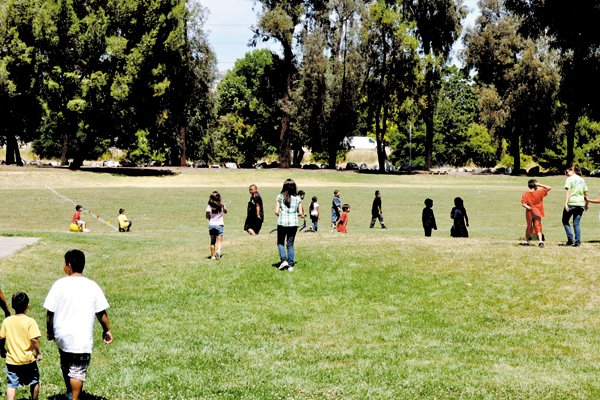Showers will likely continue throughout the week, but
forecasters and water district officials echoed past warnings that
it probably won’t be enough.
Showers will likely continue throughout the week, but forecasters and water district officials echoed past warnings that it probably won’t be enough.
Nearly two inches of rain fell on Gilroy throughout the past week, bringing the area’s seasonal rainfall total to about 10 inches depending on collection location. This still leaves Gilroy behind its season-to-date average of about 14 inches. The average for the season – which runs from July to June, with January and February being the wettest months – is about 20 inches.
Despite the past few weeks’ seemingly never-ending drops, Gilroy and the rest of the county still need six to seven more inches to effectively counter the past three years of drought conditions, according to previous comments made by Santa Clara Valley Water District Spokesperson Susan Siravo.
The district is already considering mandatory water rationing this spring for the first time in 15 years, but it does not have the authority to enforce mandatory water-saving guidelines. Rather, if water supplies do not improve significantly before the district’s March 24 meeting, its board of directors could ask the retailers and cities to which it sells water to cut use by 20 percent and institute conservation programs that include educating customers on how to irrigate their landscaping more carefully and encouraging homeowners to buy more efficient appliances. Agricultural water users would not be subject to the conservation mandate.
The last time the water district called for mandatory conservation was 1989, when they asked customers to use 25 percent less water until that drought ended in 1992.
In addition, the district is considering six scenarios that would raise water prices in South County. Prices would rise from the current $275 per acre-foot – enough to last a family of five for one year – to between $385 and $430 per acre-foot.
As of Monday, the district’s 10 local reservoirs were at 53 percent capacity, or about 88 percent of their normal capacity for this time of year – good news compared to this time last year when reservoirs were at only 25.5 percent capacity and in February 2007 when they were even lower, at 15 percent capacity.
About four miles northeast of the city sits the Coyote Reservoir. The water district’s Web site reports that 12.24 inches of rain have fallen into the artificial lake as of Monday. That is about 15 percent below average for this time of year. The reservoir holds 23,244 acre-feet of water. Another critical source of water for Gilroy is the Uvas Reservoir, which is 70 percent below capacity with less than 3,000 acre-feet, up from less than 1,000 in December.
Aside from the lack of rain, new rules regulating pumping from key sources outside the district could mean 30 percent less water coming into Santa Clara County from sources such as the San Joaquin River Delta over the next year, according to a district staff report. Due to shortages, this year the district will rely more than it ever has on a vast groundwater basin in southern California to supply local customers, but Siravo said that water costs more than other imported water because it has to be transported such a long distance. Imported water accounts for about half of the district’s total supply.
The SCVWD provides drinking water as well as flood control to the 1.7 million people of Santa Clara County. It has an annual budget of $411 million and employs about 850 people.
Rainfall totals, season to date:
2009: 11.22
2008: 12.91
2007: 5.75
average since 1957: 13.76
Sources: Santa Clara Valley Water District, National Weather Service














